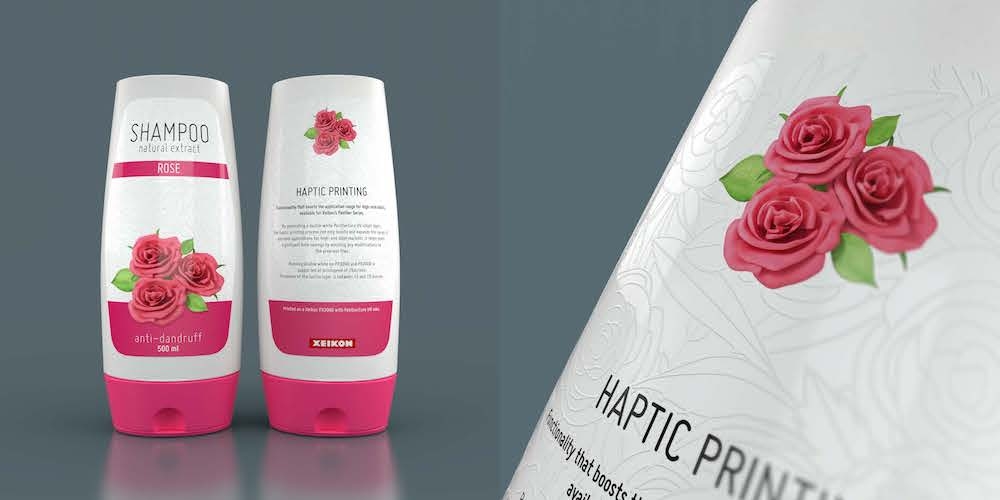
Features
Printing
Wide-format Inkjet
Xeikon adds haptic technology to Panther inkjet printer
September 3, 2019 By PrintAction Staff

Xeikon says it has developed a solution for printers looking to enhance and increase their range of labels. Described as a combination of the Xeikon X-800 workflow and the PantherCure UV ink, the solution can generate a tactile layer, creating a haptic effect in print.
Xeikon says its new haptic printing process will boost and expand the range of possible applications for high-end label markets, while making significant time savings by avoiding any modifications to the prepress files.
“The technology generating the tactile and textured layer is embedded in the Panther’s X-800 workflow,” says Jeroen Van Bauwel, Director Product Management. “It is the brand owners and designers who define the structure, shape and form of the design. When the file is received, the workflow automatically recognizes the elements of the design and generates the information required to drive the print head – that’s what creates the haptic effect in print on the end product.”
Designed to optimize the workflow on the Panther, Xeikon has developed a specific solution embedded in the X-800 workflow: an automated optimization of the white ink layer.
The production of labels on clear facestocks comes with unique challenges. An opaque white is required to make the design standout, this may result however in varying ink layer thicknesses across the web, Xeikon explains, saying the uneven thickness of the ink layer will generate a telescoping effect on the printed rolls. In the past, press operators have overcome this by printing smaller rolls, resulting in more frequent roll changes and extra waste in material and time.
Some printers, it says, found a solution in spending extra time in prepress to reduce the amount of white. This prepress work can be handled in a fully automated way by the X-800 digital front-end without intervention at any stage in the production process, Xeikon explains. The X-800 automatically reduces the white layer and the extent of reduction will depend on the colours that come on top of it. The result is an increase in uptime during the manufacturing process – both in printing and converting – as printers can run larger rolls, Xeikon says, noting that PSPs can save on cost because of the reduced amount of white ink, but also because of the reduction of waste.
Print this page